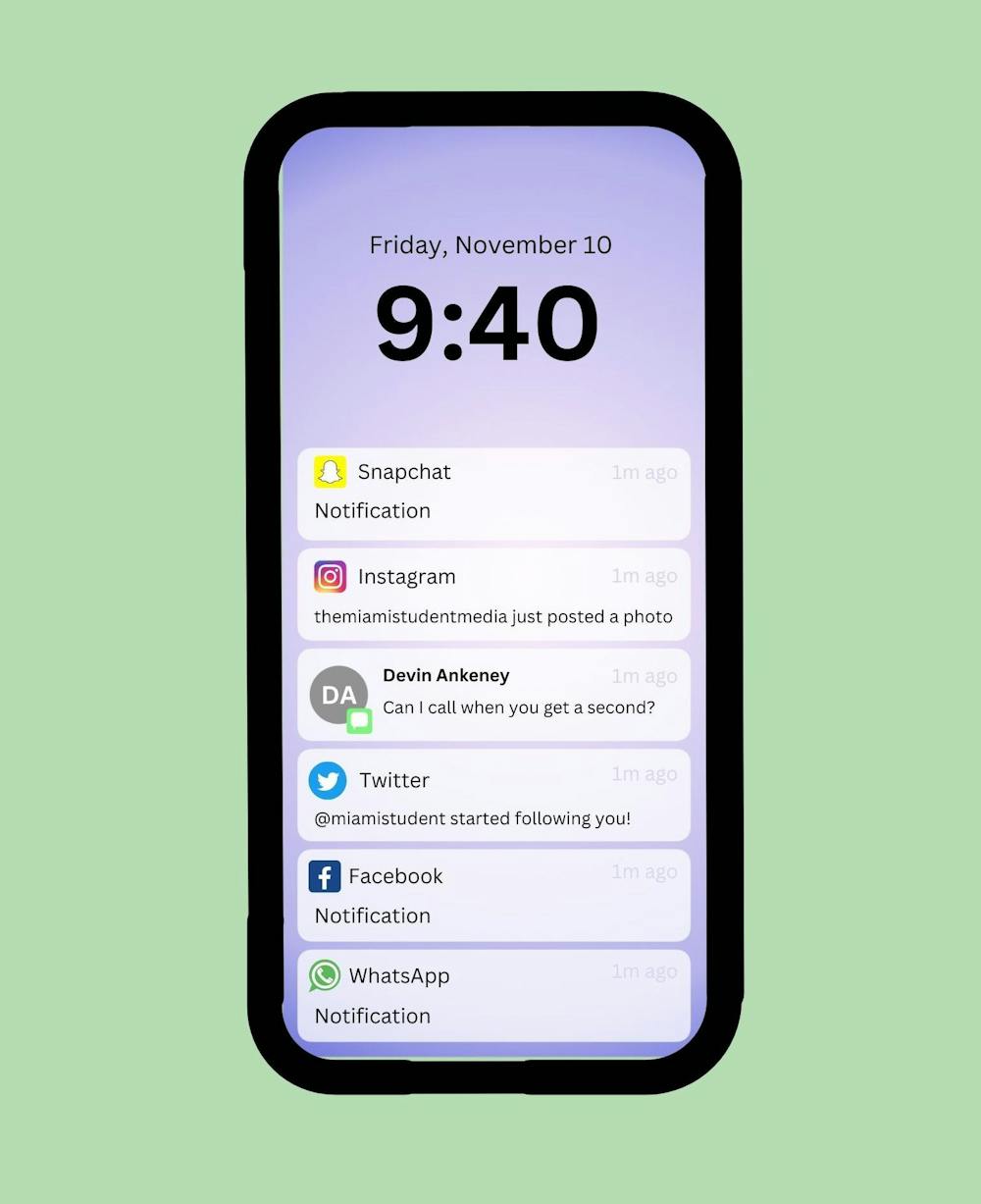Snapchat. Instagram. iMessage. The app formerly known as Twitter. Facebook. WhatsApp.
Those are just a few of the many apps we use to talk to one another.
Digital communication is the crux of our generation’s social life. We’re constantly active on our phones and other devices, and many of us spend a quarter or more of each day on our phones.
We don’t need this many options, and the fact that we do is a sign of a broken industry model intent on capitalizing on our every waking moment. Every app has a different gimmick, but they all do the same basic task: texting each other with attachments.
On Instagram you can share posts and reels. On Snapchat, you can send brief photos that “disappear” after a mere moment. On iMessage, you can send stickers you make yourself in the middle of text chains.
This might seem like a good example of American individualism manifesting itself in product offerings for consumers, but it’s crucial to remember what each of these platforms was once used for.
Each communication app used to be genuinely unique. iMessage was a way to text friends, while Snapchat was better for photos and videos directed to one person and Instagram was great for sharing images with all of your friends and family at once.
Today, the cycle of copy-and-paste capitalism has come to bear a plethora of apps that all do the same thing. Every app is the everything app, with the companies behind them trying to take all of your time for themselves.
Internet ad revenue is the core tenet of social media. The reason these apps and services can be free is that these companies make money off the time our eyes spend seeing advertisements while doom-scrolling in-app.
Therefore, each company is inclined to copy features consumers use in other apps to make the ultimate experience app — one in which a consumer can do every communication and social interaction they could dream of.
That’s why all of our apps look the same now. That’s also why you see TikTok videos on Instagram Reels and have them shared on X. Everything is converging to become the same exact product.
For college students like us at Miami University, this practice is especially harmful. We spend countless hours on our phones, and we have a social contract with one another to have and maintain social media accounts. It’s how we interact, even if we don’t want to.
Enjoy what you're reading?
Signup for our newsletter
I’d love to get rid of my Instagram account and even my Snapchat account, but I’m scared of missing out on something a friend might send me in that app — especially when it comes to content that is much harder to see without the app (I’m looking at you, Instagram).
Today, the gimmicks that made each communication app we use unique and interesting have become background elements of a slate of monotonous crap that all function the same way. We see this process in real-time as Elon Musk tries to make the once-great Twitter into an “everything app” called X.
Maybe back in the early-2010s when students were all getting phones for the first time, these various options offered a multitude of affordances that signified a blossoming industry — the way the industry should grow in a capitalist system. But now, these “choices” are obsolete.
If you want to communicate and socialize with friends and family, there’s no escaping social media, an industry that has made monopoly normal. That’s especially true for our generation, the first “digital natives."
We can’t do much to stop this trend. Sure, we can try to delete some accounts and choose the products and services we enjoy and want to use, but sooner or later we’ll be socially forced to go back to products we didn’t want in the first place.
The best thing we can do now is maintain awareness of the problem: Social media corporations are subverting antitrust laws to make it so that we do not have a choice as to whether we engage with their platforms.
If we stay aware and voice our concerns, one day the social media industry might become again the blossoming arena of choices and affordances that it once was. For now, it remains a bleak all-encompassing mess of practices intent on stealing our eyes for more and more mere moments until all of them have been stolen for a few more cents of ad revenue.
Be aware of the problem. Notice the convergence of features of your formerly favorite apps, and don’t let these monopolistic mega-corporations steal your time simply because we’ve all become so used to using their apps.
Devin Ankeney is a senior double-majoring in journalism as well as media and communication with a history minor from Scarsdale, New York. They have been with The Student for nearly three years and are currently the Opinion Editor, Business Manager and a multi-section contributor.




